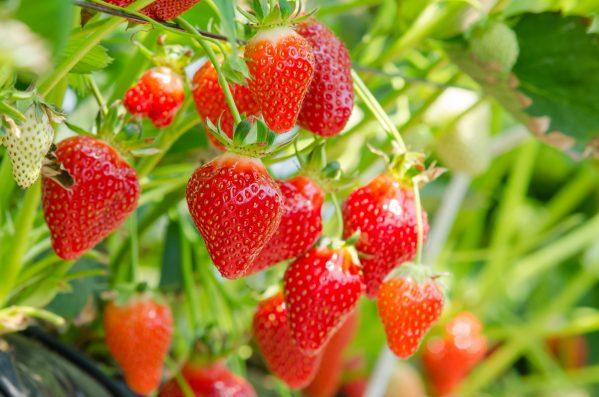Yes, You Can Actually Grow Fruit Indoors: Here’s How To Get Started And Use Just A Small Amount Of Space To Reap A Big Harvest

Growing your own fruit can be a really rewarding experience, especially when it’s able to be done right at home!
You don’t even need a large backyard or garden, either. In fact, whether you’re living in an apartment with just a few windowsills or in a house with limited yard space, indoor container fruit gardening offers a unique and effective way to cultivate fresh, juicy fruits.
What Is Container Fruit Gardening?
Container fruit gardening is exactly what it sounds like– growing fruit trees and plants in containers or pots instead of planting them in the ground.
This method is a game-changer for those with limited outdoor space or harsh weather conditions.
However, not all fruits are suitable for indoor gardening. Compact varieties like strawberries, dwarf citrus trees (like lemons and oranges), and certain types of figs and grapes thrive indoors.
So, when selecting fruits, consider their light, space, and care requirements to ensure they’re compatible with your indoor environment.
How To Select The Perfect Potting Mix
The first step to growing fruit inside is selecting the right potting mix, which is crucial for healthy indoor fruit plants.

Taras Garkusha – stock.adobe.com – illustrative purposes only
Unlike regular garden soil, a good potting mix provides adequate drainage, aeration, and nutrient retention.
So, opt for a high-quality, organic potting mix designed for container plants. Some fruits, like citrus trees, may also require a more specialized mix, so do your research.
Light Requirements & Placement
Adequate lighting is crucial for fruit-bearing plants, too. Most fruit trees and plants require several hours of sunlight daily. So, south-facing windows are ideal for maximum light exposure.
If natural light is limited, consider using grow lights. These artificial lights mimic natural sunlight, helping your plants photosynthesize and thrive.
Positioning your plants correctly and ensuring they receive enough light can significantly impact their health and fruit production.
Fertilizing & Watering
Balancing fertilization and watering is key to a bountiful harvest. Indoor fruit plants still require regular feeding, albeit slightly less than their outdoor counterparts.
You can use a balanced, water-soluble fertilizer and follow the recommended frequency and quantity. Over-fertilizing can harm your plants, so it’s better to err on the side of caution.
As for watering, ensure the soil remains moist but not waterlogged. Overwatering can lead to root rot, a common problem in container gardening.
So, be sure to check the soil moisture with your finger and water when the top inch feels dry.
Pollination Considerations
Pollination is a vital process for fruit production, and indoors, it can be a bit tricky. Some fruit plants, like self-pollinating dwarf citrus trees, don’t need help. However, others may require manual pollination.
You can use a small paintbrush to transfer pollen from one flower to another or gently shake the plants to mimic the action of the wind or bees.
Just remember that understanding the pollination needs of your indoor fruit plants is essential for a successful harvest.
Temperature & Humidity Control
Indoor environments often lack the natural temperature and humidity fluctuations of the outdoors, which can affect plant growth.
Most fruit plants prefer a consistent temperature range, usually between 65-75°F (18-24°C). So, avoid placing your plants near heating or cooling vents, as drastic temperature changes can stress them.
Humidity is also a factor, particularly for tropical fruits. That’s why using a humidifier or placing a water tray near your plants can help maintain the necessary humidity levels.
Pest & Disease Management
Indoors, plants are less likely to encounter pests and diseases compared to outdoor gardening, but they’re not immune.
You should regularly inspect your plants for signs of pests like aphids, spider mites, or mealybugs. Natural remedies like neem oil or insecticidal soap can be effective treatments for these issues.
Also, be on the lookout for signs of diseases such as leaf spots or root rot, and address any issues promptly to prevent spread.
How To Navigate Root Pruning
Root pruning might sound daunting, but it’s an essential part of maintaining container fruit plants. As these plants grow, their roots can become too large for their pots, leading to reduced fruit production and overall health.
To root prune, carefully remove the plant from its pot every two to three years and trim away a portion of the outer roots. This process encourages new root growth and keeps your plant healthy and productive.
Harvesting & Enjoying Your Fruits
The most rewarding part of indoor fruit gardening is harvesting the fruits of your labor. Each type of fruit will have its own signs of ripeness, such as color change, ease of detachment, or fragrance.
Just be sure to harvest your fruits gently to avoid damaging the plant. Then, once they’re harvested, you can enjoy your fruits fresh or use them in recipes to add a personal touch to your meals.
If true crime defines your free time, this is for you: join Chip Chick’s True Crime Tribe
A Teacher At Her School Got Fired For Dating A Student And Eventually Got The Student Pregnant
Sign up for Chip Chick’s newsletter and get stories like this delivered to your inbox.
More About:Gardening